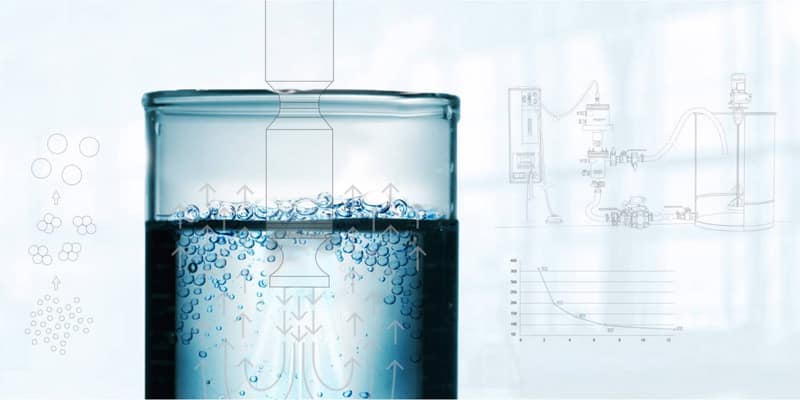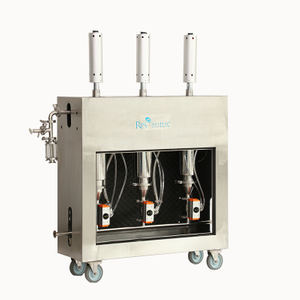Ultrasonic Water Treatment Technology
In recent years, the ecological environment has received increasing attention. Therefore, in the current context of increasingly severe environmental and resource constraints, better protecting it is of urgency and importance. The water environment is a crucial component of the ecological environment. Failure to effectively protect it and effectively address water pollution will not only directly impact residents' daily lives but also trigger various social conflicts and problems, hindering human development.
Ultrasonic water treatment technology utilizes the cavitation and thermal effects of ultrasound to deeply treat water resources. It is simple to operate, environmentally friendly, and pollution-free, meeting the needs of sustainable development. This article, starting with ultrasound and analyzing traditional water treatment methods, reviews the contribution of ultrasonic water treatment technology to water pollution from various perspectives, including water body types, application methods, mechanisms, and influencing factors, and offers prospects for the future development of ultrasonic water treatment.
Ultrasonic waves are generally referred to as sound waves with a vibration frequency between 20 kHz and 10 MHz, as well as elastic waves generated in a medium. Currently, many researchers, both domestically and internationally, are exploring the integration of ultrasound with water treatment, hoping to effectively remove pollutants from water. Ultrasound can act on bacteria in activated sludge, enhancing pollutant removal efficiency by increasing bacterial activity. Low-intensity ultrasonic irradiation can effectively increase the biological activity of anaerobic ammonium oxidation granular sludge. Ultrasound can act on organic pollutants in water, thereby improving the composition and environment of wastewater and increasing wastewater degradation rates. When ultrasound propagates through liquid, it causes the particles in the medium to vibrate, accelerating molecular collisions and subjecting them to greater mechanical forces, thereby removing dirt or contamination attached to the surface of the medium. Furthermore, ultrasound can act on enzymes, increasing their activity and improving pollutant removal efficiency. While ultrasound can help remove organic pollutants from water, it also has limitations, such as energy consumption, limited application, and factors affecting pollutant treatment efficiency. Therefore, how to improve ultrasound removal efficiency, reduce energy consumption, and expand its application has become a hot topic of research.
Types of Water Treated with Ultrasound
Ultrasound can be used to treat a wide variety of water types, including domestic sewage, industrial wastewater, surface water, marine wastewater, high-ammonia and nitrogen inorganic wastewater, rare earth wastewater, and low-temperature domestic wastewater. Domestic sewage is particularly relevant to human life. Domestic sewage refers to water discharged from daily life and commercial and industrial activities, primarily from homes, schools, hospitals, shops, public places, and industrial enterprises. This sewage contains a large amount of organic and inorganic matter, such as proteins, carbohydrates, fats, urea, and ammonia nitrogen, and inorganic matter such as silt and debris. Furthermore, domestic sewage also contains a large number of pathogenic microorganisms and parasite eggs. These pollutants pose a significant threat to the environment and human health, necessitating prompt treatment. In some cases, ultrasound is used to disrupt the structure of organic matter in sewage, promoting microbial degradation. Furthermore, the cavitation and agitation effects of ultrasound aid in the coagulation and sedimentation of suspended solids. Industrial wastewater refers to wastewater generated during industrial production, including washing water, cooling water, and water used for equipment and site cleaning.
This wastewater contains lost industrial raw materials, intermediate products, by-products, and pollutants generated during the production process. Industrial wastewater typically has high pollutant concentrations and a complex composition, posing significant risks to the environment and ecosystems. It requires specialized wastewater treatment to meet standards before discharge. For example, an electronics manufacturer uses high-frequency ultrasonic equipment to treat wastewater. The mechanical and chemical effects of ultrasound break down the molecular structures of organic matter and oil in the wastewater, breaking them down into smaller molecules for easier treatment.
Applications of Ultrasonic Technology in Water Treatment
Ultrasonic technology can be used alone or in combination with other water treatment technologies. Generally, ultrasound alone is inefficient in pollutant degradation and consumes a lot of energy. Combined technologies offer higher efficiency and lower costs, representing a promising future development direction for ultrasonic applications.
Ultrasonic Technology Alone
1. Sterilization and Disinfection
Ultrasonic technology can locally thin the membrane surface through steady-state cavitation, making cells more permeable to other cells during the stacking process. This accelerates material exchange across the cell membrane and promotes wastewater purification. Its disinfection and sterilization objectives are primarily achieved by destroying bacterial cell walls, leading to bacterial death. Ultrasonic technology can also induce a resonance effect in bacteria, further enhancing its sterilization effectiveness. While ultrasonic technology is highly effective in sterilizing and disinfecting drinking water, swimming pool water, and hospital wastewater, the cavitation effect can cause dissolved nitrogen and oxygen in the water to react and produce inorganic nitrogen-containing byproducts. If byproducts are discharged directly into the environment without treatment, they can pollute water bodies and even pose long-term risks to human health.
2. Biodegradation
Ultrasonic technology is primarily used in biological pretreatment processes, primarily to reduce wastewater toxicity and increase the BOD5/COD ratio, thereby promoting its biodegradability. Microorganisms are the primary agents in wastewater biological treatment. Currently, most sewage treatment plants still use traditional biological treatment methods to treat soluble, easily degradable organic matter. However, the effectiveness of traditional biological treatment is significantly affected by influent quality and quantity. Treatment effectiveness is often poor when the influent quality and quantity fluctuate significantly, or when it contains recalcitrant substances. Low-intensity ultrasound often enhances biological treatment efficiency through mechanical, thermal, cavitation, and damage effects. The mechanisms by which low-intensity ultrasound promotes biological reactions are primarily manifested in the following ways: 1) Enhanced mass transfer: increasing cell membrane permeability and facilitating the transport of substances into and out of cells; 2) Increased enzyme activity: enhancing the entry of reactants into and the exit of products from enzyme active centers, reducing the inhibition of enzyme activity caused by the accumulation of secondary metabolites, thereby increasing enzyme activity and promoting enzyme-catalyzed reactions; 3) Accelerated cell growth: Appropriate ultrasound frequency, intensity, and duration can enhance overall cellular metabolic efficiency and accelerate cell growth.
3. Promoted Activated Carbon Regeneration
Ultrasound can promote the regeneration of activated carbon through acoustic cavitation. When ultrasound propagates through liquid, it generates cavitation bubbles. The instantaneous collapse of these cavitation bubbles produces intense shock waves and microjets. These physical effects promote the desorption of adsorbates from the activated carbon pores, thereby improving regeneration efficiency. Liu Cheng et al. studied the effectiveness and mechanism of low-frequency ultrasound on activated carbon regeneration. The results showed that low-frequency ultrasound improved the adsorption index of activated carbon and could also maintain the high biodegradability of biological activated carbon to a certain extent. They believed that the high temperature, high pressure microjets and microliquid flows generated by the rupture of cavitation bubbles during the ultrasonic process promoted the regeneration of activated carbon.


 English
English














